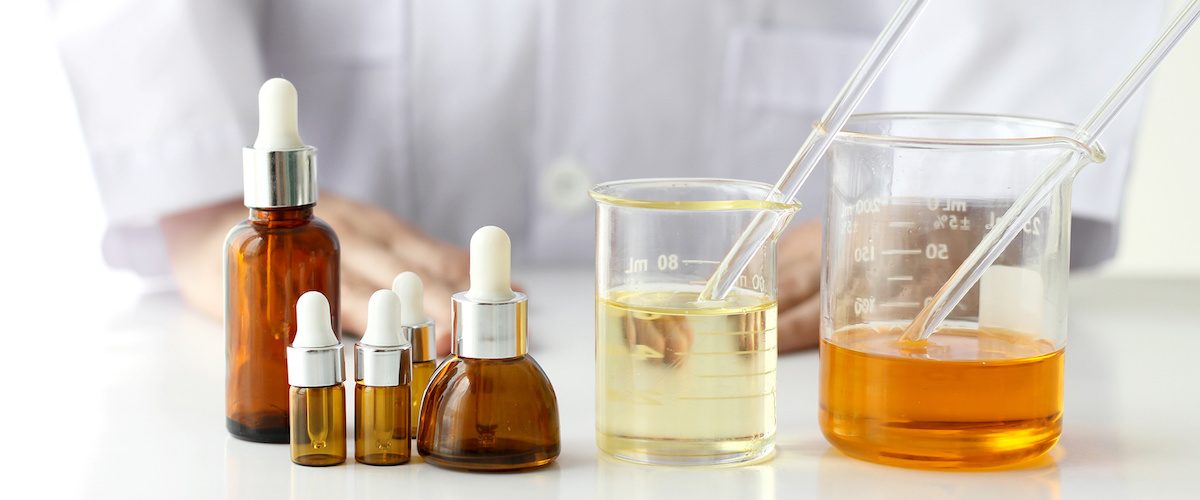This is the third article in our new series ‘The Ugly Side of the Beauty Industry’ that explores the seemingly harmful and at times toxic stories that make the news. This article explores the toxic ingredients found in most personal care products, and how you can minimise your exposure to them.
Have you ever read the ingredients list on your lotion or shampoo bottle? Be real, how many of the mystifying array of multi-syllabic ingredients can you pronounce, let alone know what they do? We assume they’re safe enough to put on our bodies – but how much do we really know about the products we slather on ourselves every day?
Unfortunately, the personal care industry is largely self-regulated, so they can effectively put whatever they want in products without being held to account. A minuscule approval process exists, but only for color additives and ingredients classified as over-the-counter drugs.
Many of the synthetic chemicals we use every day are skin irritants, skin penetrators, endocrine disrupters and are carcinogenic and can be extremely dangerous. For example, triclosan, used in some toothpaste, soaps, mouthwashes and cosmetics, has previously been linked to bowel cancer and antibiotic resistance.
A History of Toxic Beauty

Smearing ourselves in toxic materials in the quest for achieving beauty standards is nothing new. As seen by Margot Robbie in Mary, Queen of Scots, in the time of Queen Elizabeth I, the aristocracy smeared what they called Venetian Ceruse (a mixture of white lead and vinegar, also known as Spirits of Saturn) to the face, neck and bosom to achieve the sought-after alabaster skin. Pale skin was a sign of nobility, wealth and delicacy was sought after by many. In a time where skin problems and pox were a common thing, smooth, unblemished skin was a rarity.
Naturally, smearing lead all over one’s skin caused some serious skin damage. Not only did it make the skin look “grey and shrivelled” there was lead poisoning, hair loss and if used over an extended period of time, could cause death. Alongside this, the juice from the highly poisonous belladonna berries was used as eye drops to dilate women’s pupils.
This conglomerate of makeup would typically be kept on for at least a week. When removing, women commonly used rosewater, lemon juice or a mixture of eggshells, alum, mercury and honey. Many people felt that the mixture left their skin soft and supple. In reality, the mixture was actually eating away their skin.
The Ugly Truth About Toxic Ingredients
These days, there are thousands of chemicals in the personal grooming that we use in the pursuit of beauty — many of which are absorbed into your body. Your skin is the largest organ of your body and since it is porous, it absorbs whatever you put on it. In fact, it is claimed that women who use makeup on a daily basis are absorbing over two kilos of chemicals a year into their bodies. These toxic chemicals can be causing all sorts of issues from our reproductive systems, to an increase of allergies.
A big unknown is how chemicals interact with each other in the body after they are absorbed through the skin.
Many personal care products contain ingredients known as “endocrine disruptors.” These toxic chemicals can interfere with normal hormone functions of the endocrine system that are crucial to a healthy pregnancy and breastfeeding. But they may also cause reproductive problems before you get pregnant. Studies have linked endocrine disruptors to endometriosis, disorders of the uterus, and disorders of the ovaries, such as premature ovarian failure (POF) and polycystic ovary syndrome (PCOS). Much of the research concedes that more needs to be done to determine the true risk of exposure to such chemicals in our personal care products. But considering the FDA has little proactive oversight of cosmetic ingredients, you may want to play it safe and avoid endocrine-disrupting chemicals when it comes time to think about starting a family.
While some chemicals are too large to enter our bloodstream, many are small enough to penetrate. In 2005, the Environmental Working Group published a combination of two studies that found toxic chemicals in the umbilical cord blood of newborn babies born in the U.S. in 2004. They screened for more than 400 chemicals, and an astounding 287 toxins were detected within the umbilical cord blood of these newborns. Of these 287 chemicals, 217 were neurotoxins, and 208 are known to damage growth development or cause birth defects. These toxins included mercury, polyaromatic hydrocarbons (PAHs), polybrominated and polychlorinated dibenzodioxins and furans (PBCD/F and PBDD/F), perflorinated chemicals (PFCs), organochlorine pesticides like DDT and chlordane, polybrominated diphenyl ethers (PBDEs), polychlorinated napthalenes (PCNs), polychlorinated biphenyls (PCBs), and many others.
Ways You Can Reduce Your Risk
It can be overwhelming to constantly worry about each potentially toxic ingredient in every personal care product we use. But having go-to basics such as toothpaste, deodorant and moisturisers that are non-toxic and repeat buying these products will ensure you don’t have to worry about every ingredient all the time. For many changing these three basics that we use every day will drastically improve the overall quality of your routine.
In recent years, many people have adapted multistep skin-care routines, which also introduced new products in their beauty regimen. This calls for greater caution and thoroughness in looking for the right products for yourself, from hydrating toners to protective sunscreen. Educate yourself and do your research before you buy. Choose certified organic and natural skin care products where possible. Read labels and educate yourself about what ingredients to avoid when selecting personal care products. Repeat buying once you’ve done the research will save the hassle of having to figure it out all over again. Also, voting with your dollar to support companies that are keeping us safe with their commitment to non-toxic ingredients is imperative if to grow the safety of the beauty industry as a whole.
There are a number of fantastic apps with accompanying websites that will help you decode the terminology and to understand the ingredients, and take the guesswork out of shopping.
It’s impossible to avoid every single synthetic chemical, but you can do your part in limiting the number of toxic ingredients your body is exposed to. Eat clean, avoid chemical-laden processed foods, drink plenty of filtered water and look for products that are certified organic if you want to avoid toxic chemicals.







